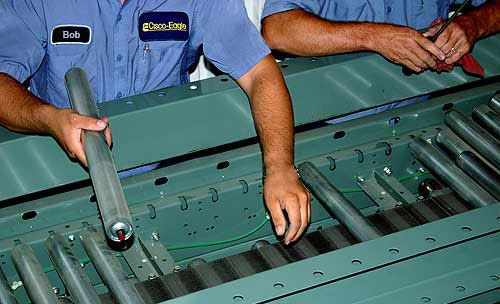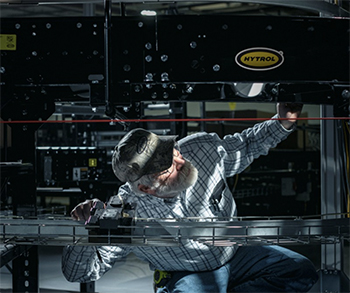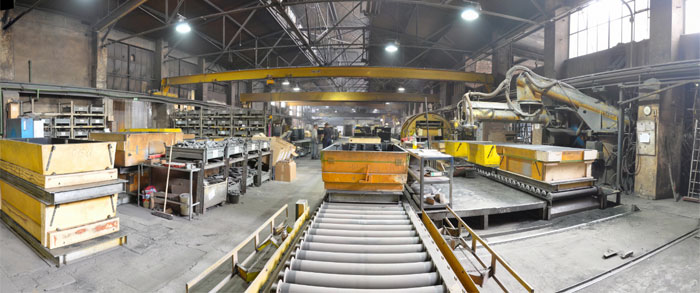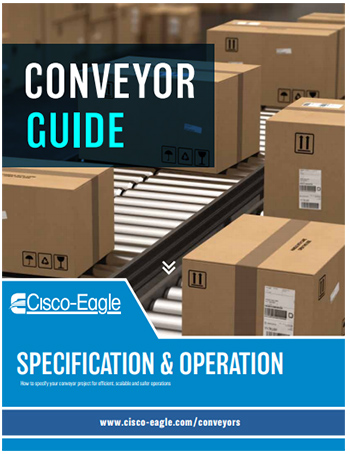How to Reduce Conveyor Headaches, Repair Costs and Downtime
What steps can you take to make your system reliable?

We spoke with Eric Dodd, who manages Cisco-Eagle’s Field Services Group. Eric’s expertise when it comes to conveyors – and how to keep them running tip-top – is unparalleled. Eric and the Field Services group maintains many miles of conveyors from virtually every manufacturer, in just about every environment. Here’s what he had to say.
What’s the biggest mistake people make with conveyor maintenance?
Dodd: The biggest I can think of is not to do it at all, but I don’t see that too often. We still get repair requests that could have been avoided with better maintenance.
Let’s try the second biggest mistake, then.
Dodd: The thing we see is that people aren’t thorough enough. They may not do all the steps, or replace aging parts when that should happen. I get it – when your conveyor is working, it’s easy to let it go. But it’s a mechanical device, and it will eventually fail as it ages without some TLC. You can get by with it for a while, but you won’t get away with it forever.
And when it goes bad, it seems like it’s always at the worst time…
Dodd: Every time! I want to stress training. When I say that people aren’t thorough enough, it’s not about laziness. It’s about understanding the issues.
It comes down to having maintenance personnel who understand how the conveyor works, and why all the maintenance steps are critical. The whole point is to avoid downtime. We get calls from companies when the conveyor is down and they are trying to hustle orders out with part or all of their line dead. Lots of those calls might be avoided, and good technicians, who know how a conveyor works, and why the maintenance list is important, are key to that.

Eric Dodd of Cisco-Eagle, manager of field services
It’s mainly about people?
Dodd: Mostly, but even really dedicated people who know what they’re doing can’t overcome bad maintenance systems. Don’t forget spare parts so that when something happens, they can get a conveyor running fast, and not have to wait for something to be shipped overnight. Almost any conveyor you can buy comes with a spare parts list. Keep those parts on hand — it could be the difference between an hour of downtime and a day of downtime. We sometimes advise people which parts truly can’t be acquired locally or easily and recommend extra spares.
You also have to be aware of obsolete parts. Conveyors can last a long time. I’ve worked on conveyors that are thirty years old, and they churn away. But there are times with that old equipment that certain parts might be rare, with long lead times, or flat-out impossible to obtain. If you know that in advance, my guys can help you find substitutes or advise you when it might be time to replace.
So it’s about people and parts?
Dodd: Don’t forget the process. You have to have a schedule for maintenance and inspections or you’re eventually going to have problems.
Regular conveyor systems audits are always worth the time and energy you spend doing them. Audit the system from the first in-feed point to discharge on regular intervals. It’s not burdensome or time-consuming, but it can save you from significant expense and downtime. You may want to call someone like us to do it, since an independent eye can spot what people who work in and around the conveyor daily might miss.

How often should you inspect your conveyor?
Dodd: It depends on what you’re inspecting.
Safety should be monitored all the time. Look for missing guardrails, exposed wiring or machinery, emergency stop issues, that kind of thing all the time. You can’t do that too often. Everyone from the guys on the line to the manager to the people from the office who visit the warehouse should know what unsafe operation looks like.
Read more: The Critical Importance of Conveyor Emergency Stops
Other things, like lubricant leakage from the gear case should get a weekly look. Cleaning debris every week will save a lot of heartache.
“Listen to your conveyor while it’s moving at least once a month”
Are there odd noises coming from the bearings or pulley assemblies? For belt conveyors, get a look at your belt once a month. Check for wear or damage to the belt and the lacing with the conveyor shut down and locked out. If there are raveled edges or cords that could catch on a pulley, remove them. Also, check the mounting bolts, the electrical wiring and return rollers once a month. This is the time to do thorough cleaning and housekeeping, as well.
“One of the key things it just to pay attention. Just listen, just watch. Talk to your people on the line. Ask them what they’re hearing and seeing. Some minor thing can become a big issue if it’s neglected.”
Then we get to quarterly issues. You have to inspect, adjust and lubricate cam rollers, both the front and rear blocks. I can’t stress enough how you have to lock out and tag out to do this.
Once a year you should change gearbox oil. You also examine and clean your master control panel. Blow the dust out of the interior, then look for burned wiring and loose terminal connections. The next thing is to examine drive sections. You do this with the conveyor running under load. You’re listening for gear or bearing vibrations or anything else that sounds off. Experienced technicians can tell a lot just by listening that people who work the line daily might not. Wipe down your boom roller chains and sprockets and inspect bearings and lubrication.
So it’s weekly, monthly, quarterly and once a year?

Dodd: Generally, but that depends on your conveyor and environment. In dirty, dusty, wet or difficult environments, you do this more often. Places where there is a ton of airborne debris means you have to inspect and maintain more often. Also, this is pretty general. There are specific steps for different conveyor types, and your conveyor should come with those lists.
I’ll warn people not to get complacent if the system has run flawlessly for a long period of time. It’s always better to know about issues in advance.
How about safety? What are you seeing in the field?
Dodd: It’s so important, and people sometimes don’t understand what they are doing wrong around conveyors. We go to extremes to be sure our people are aware of their personal safety. They’re all OSHA-30 and they all get specific conveyor safety training. But we see things in the field that shouldn’t be going on — things like incorrect emergency stop setups that we report to the owner of the system. Things like guardrails removed that might pose a danger to someone working near the conveyor.
“I’ve seen order pickers wearing loose clothing around a conveyor. You can’t have that. I’ve seen emergency stops either not installed or taken off. Can’t have that either.”
But probably the worst thing people do is work on a conveyor without lockout/tagout. We are religious about that, and you have to be if you are going to work on any kind of active machinery.
Can you elaborate about lockout/tagout?
Dodd: Absolutely. You can’t do anything to a conveyor while it’s operating. I mean, anything at all.
We just won’t do it even if it seems safe. You have to lock the circuit breakers out, disconnect the switch, and throw a padlock on it before you touch a tool or get into it. Belt tracking is another one where people can get hurt. You do the same things; lock it up and never touch a running belt. The thing about some conveyors is that they seem safe because it’s this kind of slow moving belt. You just don’t reach into a conveyor, under it, or anywhere else until it’s locked out.
Read more: Another Reminder: The Importance of Lockout/Tagout
Thanks, Eric!
Dodd: You bet. Thanks for the talk!
Download Cisco-Eagle’s guide to conveyors & systems
Well-executed conveyors and systems will optimize your operation–and we can help you make that happen. Cisco-Eagle’s detailed guide to conveyors gives you advice from our expert employee-owners, links, articles and more.
Download the guide today
Tags: ROI
Scott Stone is Cisco-Eagle's Vice President of Marketing with 35 years of experience in material handling, warehousing and industrial operations. His work is published in multiple industry journals an websites on a variety of warehousing topics. He writes about automation, warehousing, safety, manufacturing and other areas of concern for industrial operations and those who operate them.




